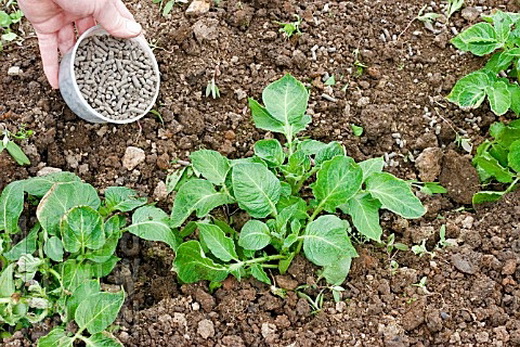 For centuries, potatoes have been in demand among the citizens of our country, because many of your favorite dishes are prepared using this vegetable, whether it is first courses, side dishes or original snacks and salads.
For centuries, potatoes have been in demand among the citizens of our country, because many of your favorite dishes are prepared using this vegetable, whether it is first courses, side dishes or original snacks and salads.
That is why practically no garden can do without a specially designated area on which potatoes are grown. Naturally, everyone who is engaged in such a garden is interested in getting a good harvest of high-quality and beautiful vegetables, so feeding potatoes is a very urgent issue for many residents of our country. The quality of the crop is affected by the climate, soil structure, its composition, and even the region in which the plot is located. In order to create the most comfortable environment for growing vegetables, you need to know how to feed potatoes, and this is what we will talk about in detail in our material.
Content
Root dressing during flowering: organic fertilizers
In order for the potato to grow and develop properly, it will need various nutrients, and in an increased amount, because only a dry potato substance contains a variety of chemical elements. In total, there are about twenty-six of them, but nitrogen, magnesium, phosphorus, calcium and potassium are recognized as the most necessary for the development of the vegetable. The peak of demand for the listed elements occurs precisely during the flowering period, and after the tops of the leaves begin to die, this need gradually decreases.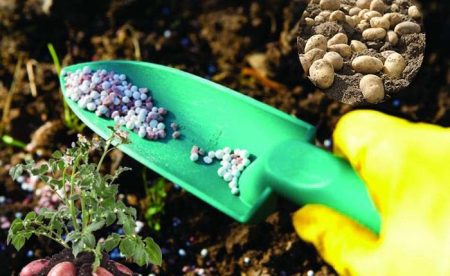
So, what to feed potatoes during flowering? There are several options that will help provide the vegetable with everything necessary for the period while it will bloom actively. Specialists prefer the use of organic or mineral fertilizers, because such top dressing of potatoes during flowering really increases yield indicators.
Potato leaf dressing
It is possible to support the development of a vegetable not only by acting on its roots, but also through the leaves of the tops, because they are able to absorb useful substances necessary for the development of its root system. You can start foliar application after the first four to five leaves of tops appear. Feeding potatoes during flowering on a leaf is most relevant during budding, because at this stage additional sources of phosphorus and potassium are simply necessary for the vegetable.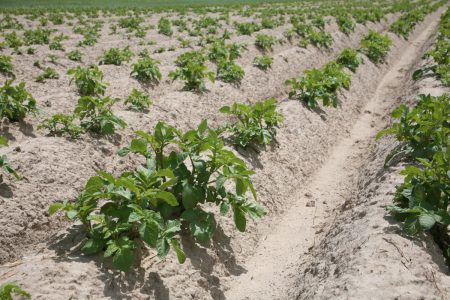
For reference! Potato leaf dressing after sprouting is superior in root mineral absorption rate, so that the effect can be seen in the near future.It is best to use this type of top dressing for young shoots - they take a nutrient solution very quickly, most importantly, do not make it too concentrated, as burns may appear.
Before feeding potatoes, it is necessary to study the weather forecast for the coming days, spraying before the rain not only does not make sense, but can also be dangerous for the soil. Rain will wash the fertilizer on the soil, which absorbs them, and this can cause the earth to be oversaturated with substances containing nitrates.
So, how to fertilize potatoes during flowering? The choice of fertilizer directly depends on the composition of the soil, as well as on the condition of the plants themselves. For example, if the leaves are slightly yellowed, you need fertilizing, saturated with nitrogen, but plants that have a purple hue, clearly ask for phosphorus. For fertilizer using ammonium nitrate, urea, ammonium sulfate, various superphosphates or potassium salt.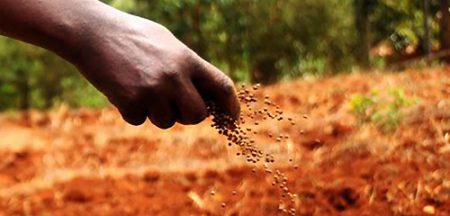
Foliar top dressing of potatoes
Before fertilizing potatoes, you must familiarize yourself with the rules for foliar dressing, otherwise you can cause irreparable harm to plants. So, a few basic principles of spraying potatoes:
- It is necessary to control the air temperature not only during the day, but also at night, so if the thermometer has dropped below zero at night, then treatment of plants in the next few days should be abandoned.
- Before feeding potatoes before flowering for the first time, you must wait two weeks from the moment the vegetable was planted.
- To avoid thermal burns to plants, avoid spraying in sunny weather. An ideal cloudy, cloudy day, but not rainy. You can carry out the procedure in the early morning, or when the sun begins to set below the horizon. It will take at least two hours to absorb the fertilizer.
- Before feeding potatoes before flowering, it is necessary to calculate the amount of fertilizer that will be optimal for this particular variety. So, an early variety requires more fertilizing than mid-season, but early ripening varieties require frequent processing due to the intensity of consumption of nutrients.
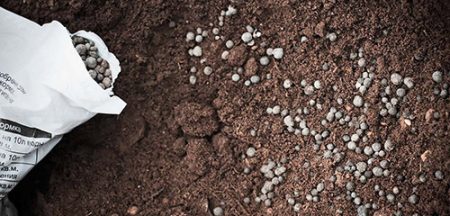
Consider some effective foliar top dressing for potatoes.
- carbamide top dressing. Before feeding potatoes before flowering, it is necessary to prepare a solution of five liters of water, one hundred grams of urea, five grams of boric acid and one hundred and fifty grams of potassium. For the first feeding, you will need to dilute the resulting solution in half, subsequent spraying is carried out with undiluted composition. You can start processing two weeks after the first shoots appear, and repeat the procedure every fourteen days;
- phosphate top dressing. If you are thinking about how to feed potatoes after flowering, then phosphorus feeding is what you need. In order to process 10 square meters. m. it will be enough to dilute one hundred grams of superphosphate in ten liters of water;
- feeding with humates. For processing, you will need a special solution of Humate + 7 at the rate of three liters per one hundredth. You can start spraying after the appearance of the fourth leaf;
- feeding nettle infusion. Nettle infusion is an excellent top dressing of potatoes before flowering, because it contains nitrogen, and iron, and calcium - all that is necessary for a good harvest.To prepare the fertilizer, you need to fill in the stalks and tops of nettles with water, and keep them warm until the solution is completely fermented. After filtering the infusion, you can start processing the field, which should be repeated regularly, every ten days.
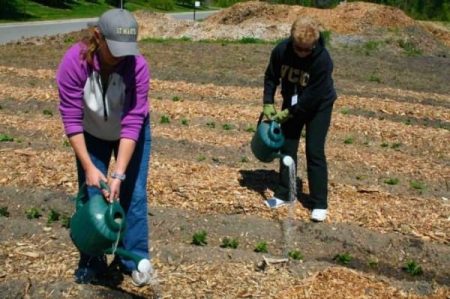
Potato dressing with mineral fertilizers
The use of mineral fertilizers is allowed not only in the spring, but also in the autumn, and about how to properly distribute the fertilizing, experts say the following: “For the autumn period, superphosphates are needed, at the rate of one kilogram per hundred square meters, as well as two kilograms of potassium sulfate per one hundredth. In spring, per kilogram of ammonium nitrate and urea per one hundredth. ” But there are many different methods and opinions regarding how to improve the crop with the help of mineral fertilizers; various solutions, agrochemicals and mixtures are used. Consider some mineral fertilizers that are in demand among experienced farmers.
- Ammonium nitrate. This fertilizer is considered to be the main fertilizing, if we are talking about root feeding, then nitrate is used at the rate of 10-20 grams / 10 liters of water per square meter. For foliar treatment, you need fifty grams of ammonium nitrate per hundred liters of water. This will allow you to process a hundred square meters of potato field, and saturate the soil and, directly, plants lacking in nitrogen.
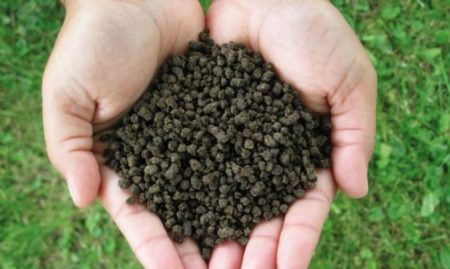
- Urea (urea). For root treatment, it is necessary to introduce urea into the soil even before the vegetable is planted, so, for one hundred parts of the site, two kilograms of urea will be needed. If we talk about basal bait, then one kilogram of fertilizer will be enough for a similar area.
- Ash. As already mentioned, potatoes often need potash fertilizers, and ash is an excellent substitute for them. There is a special technique for fertilizing soil using ashes, which consists of five stages.
- in the autumn period, after the crop has been harvested, it is necessary to add about a hundred grams of ash per square meter to the clay soil, while the fertilizer should be distributed evenly, and immediately buried with earth;
- immediately before planting potatoes, it is necessary to sprinkle it with ash: one kilogram of ash is needed per bag;
- in the spring period of planting vegetables in each well, you also need to pour ashes. Two matchboxes per hole will suffice, and the ash should be thoroughly mixed with soil;
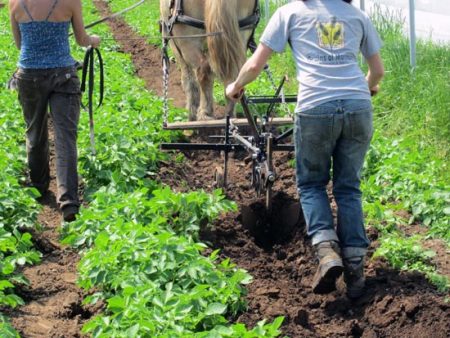
- what to feed the potatoes when hilling, so it is ash, under each bush you should pour two tablespoons of ash;
- re-hilling also requires the addition of ash. For each bush, fifty grams of fertilizer will be enough.
- Potassium sulfate. Fertilizer is necessary to saturate the soil and the plants themselves with potassium. Most often, when processing potatoes, it is recommended to add it to the soil during the process of digging the earth in a proportion of 30-35 grams per square meter. Processing is allowed in the spring, before planting the field, or in the fall, after harvesting - these will be equally effective. If you were thinking about how to feed potatoes in June, then you should pay attention to a solution of potassium sulfate. It is enough to dilute the fertilizer in a proportion of 30 grams per bucket of water, and water the field.
- Double superphosphate. Phosphorus is very important for the good development of the fruit, especially often it is not enough during the period when the potato begins to bloom, and the fruits only develop. Double superphosphate is very soluble in water, and its use is directly dependent on the soil.
- if we are talking about cultivated land, then you need to add about twenty grams of fertilizer per square meter of soil during the process of its spring or autumn digging, but for uncultivated land you should increase the rate to thirty grams for a similar plot;
- double sulfate can be used to feed plants by dissolving thirty grams of fertilizer in ten liters of water, after the crystals are completely dissolved, it is necessary to water the potato field.
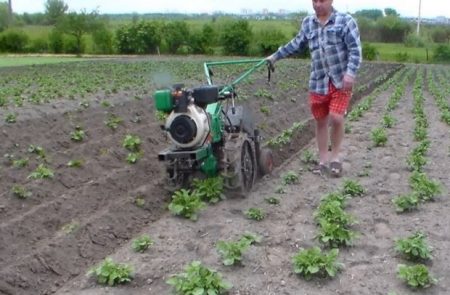
The best fertilizer for potatoes when hilling
Before embarking on the earthing up of potatoes, many people wonder what kind of top dressing should be used to improve the growth and development of tubers? Experts distinguish two of the most interesting and effective solutions with which to water the bushes before they begin to spud them. The first of these is a urea solution. One tablespoon of fertilizer per ten liters of water is enough, and no more than half a liter of the resulting feed should be poured under each bush. The second option is to breed half a liter of liquefied manure or bird droppings in a bucket, and water the bushes in the same way, five hundred grams per plant.
In addition, before you start hilling potatoes, it is advisable to sprinkle mineral or organic fertilizers between the rows, at a distance of about five centimeters from the stem itself, and in the process of hilling, bury the top dressing under the bush itself. It is optimal to use the following mixture for this: superphosphate (about 6 grams), potassium (about 4 grams) and ammonium nitrate (up to 3 grams).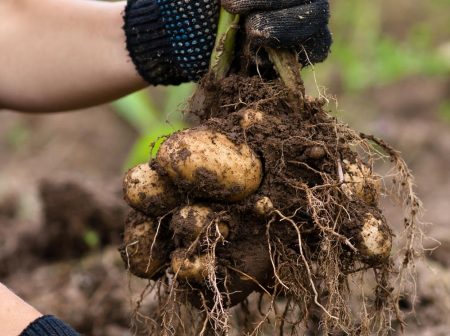
How to feed potatoes for the growth of tubers?
In order to achieve the harvest of large potatoes, it is necessary, mainly, to monitor the balance of nutrition, because each microelement in its own way affects the root crop. Nitrogen is very important in order for the potato to be large, and the crop to be large, but it is very necessary to dose the fertilizer very clearly, and also correctly calculate the time for feeding plants with nitrogen. Using foliar phosphate top dressing, you can also affect the size of the potato, but at the beginning of the season you will need phosphate root fertilizer as well, which will lead to optimal growth.
Calcium is the main component that participates in the division, expansion of potato cells, and plays an important role in the growth of vegetables, and potassium directly affects the yield. A lack of magnesium can cause a reduction not only in the size of tubers, but also in overall yield. Unilateral use of fertilizers can lead to a one-sided effect. For example, the mass of potatoes can be increased with potassium and nitrogen, but if you do not feed the plants with phosphorus, then the yield will be small.
- if daylight hours are limited in your area, then try to plant potatoes as early as possible, this will increase the growing season;
- plant physiologically mature potatoes that will sprout quickly;
- nourish, irrigate and protect plants so that the deciduous cover lasts as long as possible;
- Choose the most comfortable temperature of air and soil for planting potatoes.
Folk remedies for feeding potatoes
The oldest and most effective folk fertilizers for potatoes are considered to be slurry, nettles, wood ash, bird droppings and humus. It was these fertilizers that were used by our great-grandmothers and great-grandfathers at a time when no one knew about specialized stores for gardeners and expensive agrochemicals.
Humus is considered a very effective feeding. It must be introduced into the soil before it is plowed before winter cold, and by spring all the beneficial substances of humus will remain in the ground itself. Another popular method of feeding potatoes is as follows. Before planting vegetables, it is necessary to treat each tuber with a special solution, which is prepared from potassium humate and water. Three grams of humate per liter will suffice. Process vegetables with a sprayer.
Each gardener chooses for himself precisely the method of feeding that is most suitable for him. The choice of soil may be affected by the composition of the cultivated potato, and the desired result, for example, it is important for one farmer to maximize the yield, and the goal of the other is to grow a little, but large potato.Fertilizing plants should be approached responsibly, since the wrong proportions and methods can harm the entire crop.




 Description and description of varieties in Belarus with a photo
Description and description of varieties in Belarus with a photo Do I need to pick flowers from potatoes: why do they do it
Do I need to pick flowers from potatoes: why do they do it When to dig potatoes: timing and availability of new potatoes
When to dig potatoes: timing and availability of new potatoes How to grow a good potato crop: various methods and methods, planting and care
How to grow a good potato crop: various methods and methods, planting and care